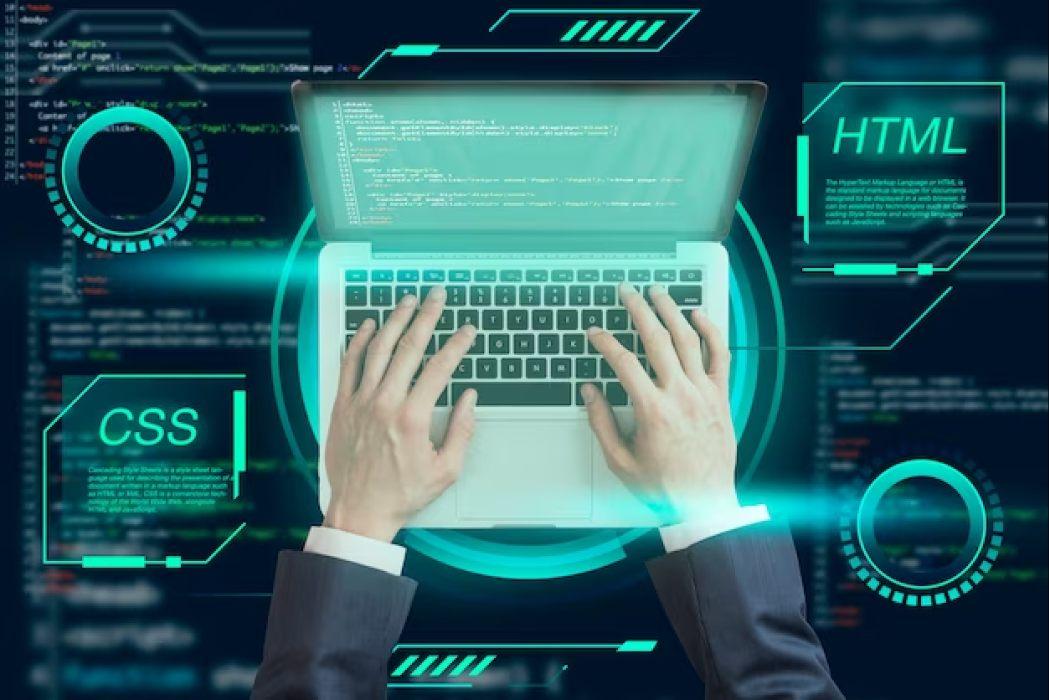Keeping up with the most recent software development technology can seem challenging. However, the software development industry is constantly changing and looking for innovative ways to serve customers better than before. In addition, technologies like edge computing, big data, artificial intelligence (AI), and the Internet of Things (IoT) are revolutionizing software development trends.
It would help if you found which IT firm follows the best software development process in the USA to build robust solutions. Because in a market with hundreds of competitors, you need to find a solution that can stand out. Additionally, maintaining the retention in the software is another complex theory.
However, you need to discover new software development trends and technologies that will dominate in 2024. So, first, the blog will show you the current state of software development. Then, read the most accurate analysis and prediction of revolutionary technologies that will create the most significant impact in the future year.
1. TensorFlow Boosts AI Development
Artificial intelligence (AI) technology is already ruling the world of software development. Today, AI no longer remains a futuristic idea. AI programs can analyze objects, understand human speech, and recognize pictures. Moreover, with its automation feature, it does different tasks anonymously and delivers the most precise results.
The IMARC Group estimates that in 2021, the global artificial intelligence business will be worth $56.5 billion. By 2027, this sum may potentially reach $308.5 billion.
Developers use unique frameworks and AI libraries to build software systems that use deep learning techniques. The usage of TensorFlow for AI development will be one of the important trends in software development this year.
TensorFlow is a deep learning framework that is open-source and created by Google. This expert tool is an industry standard for training and building neural networks. It includes a vast ecosystem of information, libraries, and tools needed to build sophisticated algorithms & models. The framework simultaneously provides simplicity and flexibility of usage, making it simple for developers to design complex software.
Why TensorFlow is a Developer's First Choice?
Why is TensorFlow so popular? Because it:
What makes TensorFlow famous and the right choice for every software development company?
- TensorFlow is popular because it supports numerous programming languages like C++, Python, and Java.
- It performs seamlessly on different mobile operating systems, CPUs, and GPUs.
- It comes with built-in intuitive APIs.
- TensorFlow is famous because it enables straightforward troubleshooting and speedy model iteration.
- It allows developers to perform complex research experiments.
- With the help of this technology, you can deploy software to the cloud directly from a web browser.
2. Infrastructure as Code (IaC) Eliminates Management Issues
The complexity of modern development environments includes many components. It has containers, microservices, clusters, APIs, interconnection, and serverless functions, making it necessary for developers to exercise ongoing caution. DevOps experts are constantly under pressure because they ensure the security and reliability of the applications. On the other hand, developers have to write code quicker and deploy it before the deadline.
DevOps teams are implementing Infrastructure as Code (IaC). It is a strategy that uses code to automate, configure, manage, and support the continuous development of dynamic computing resources as a response to these difficulties. Furthermore, organizations depend on a small team of expert developers who understand the dependencies and delivery procedures of the code. However, the IaC technique deals with the complexity of the development process.
3. The Internet of Behavior (IoB) is More Advance
One of the emerging trends in 2023 is the Internet of Behaviour (IoB). It entails collecting what is known as "digital dust" — various data on people's behavioral patterns and daily lives. Developers gather this data from a variety of sources, including facial recognition software, personal & medical devices, and social media sites.
IoB is a natural progression of IoT. However, instead of connecting devices to a network, it focuses on gathering data about human behavior. This technology aims to gain a better understanding of human behavior. By leveraging IoB, businesses can forecast customer demands. Additionally, law enforcement agencies can prevent or swiftly solve crimes. Governmental organizations can also model human behavior patterns and address societal issues.
4. Microservices Architecture Contributes to Scalability
Kubernetes drives the increased use of containers and microservices in the software development industry. It is an open-source platform that handles container orchestration. Moreover, it is a future trend to look out for in 2023.
A survey found that 85% of businesses had started the process of moving their applications to a microservices architecture. Industry experts predict that businesses will continue to use Kubernetes and microservices more and more.
The growing demand for cloud-based microservices architecture and containerization increases the requirement for security, scalability, and 24/7 availability in projects. Kubernetes is an excellent tool for managing containers and setting up a microservices architecture. Additionally, it automates software deployment for complex projects.
5. Enterprises Embrace Native Development
Despite the simplicity and affordability of hybrid development, businesses have realized that cohesion of native development standards is frequently necessary to produce sophisticated and user-friendly products. In contrast, small businesses and startups may still favor hybrid development since it is more affordable. However, enterprises are more likely to return to more dependable native practices.
6. Smart Connectivity
Many industries, from B2B to B2C, are expected to undergo radical change as a result of the Internet of Things. There will be a shift towards more expansive use cases with a global influence. However, traditional applications like personal assistants and smart homes will continue to be useful.
Any industry that manages numerous databases, devices, locations, and equipment simultaneously can benefit from these characteristics. IoT sensors gather and transmit data and then distribute it among various devices. For example, laptops and smartphones communicate to get a complete picture of the system's overall status.
7. Rise of Python
Despite not being a particularly new language, Python is currently among the world's most commonly used programming languages. Python is incredibly adaptable for a wide range of software development activities. Additionally, it is known for being superior in managing complex computational tasks like big data processing and machine learning.
In addition to its broad range of features, Python's popularity is growing because it is simple to learn. A huge global community of academics and developers supports Python. Python is the programming language of choice because it is extraordinarily well-suited to meet the needs of modern software development.
8. The Rise of Web 3.0
Web 3.0 aims to enhance the user experience by utilizing advanced technologies such as machine learning, artificial intelligence, and blockchain. Additionally, it aims to give users more control over how their data is used and visible. Users will soon have the chance to receive money for the data or content they give with multiple platforms thanks to Web 3.0. This feature promotes user data sharing while encouraging enterprises to be transparent about their data practices.
Final Thought
Software development is a discipline that is always changing, with new technologies and tools regularly appearing while others fall out of use. Businesses must keep up with the most recent trends and integrate new technology into their operations. Apart from this, hiring the best software development team is also an essential part of the software-making process. The right team will make effective strategies to help businesses stay competitive in today's digital environment. Top software solutions in 2023 will be those that use Web 3.0, IoT, Python, and artificial intelligence.















Leave a Reply